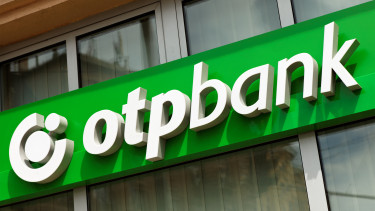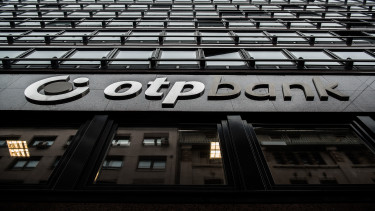Hungary ÁKK changes methodology of public debt management benchmarks

The mission of the Hungarian Government Debt Management Agency Pte. Ltd. (ÁKK) is to finance government debt and the central government deficit at the lowest costs in the long run while taking account of risks, at a high professional level. The objective is to achieve a debt structure with the best cost-risk ratio on the medium term. General public debt management objectives are quantified by benchmarks of debt management performance.
ÁKK reviews its medium-term debt strategy on a yearly basis, taking into account current and expected economic developments, typically at the end of a given year. At the end of 2022, as part of the review, ÁKK modified the benchmarks’ methodology, their associated thresholds and introduced a completely new benchmark.
Link between financing structure and benchmarks
In order to achieve its medium-term strategic objectives, ÁKK uses a stochastic simulation framework which utilises a set of mathematical modules to examine the possible evolution of the market environment, i.e. the impact of preliminary assumptions and different financial compositions on debt service. Hungary’s debt management outlook for 2023 is based on an optimal debt portfolio model [1], [2], [3]. ÁKK calibrates and runs the model at least once a year to determine a set of optimal financial compositions. The model uses an optimisation algorithm that finds Pareto-optimal financing compositions from a cost-risk standpoint among various debt instruments (institutional HUF government bonds, retail government securities and FX debt) over several iterations.
The main goal of the optimal debt portfolio model is to determine the set of financing compositions minimising the future cost and risk of the debt portfolio. Thresholds of debt management benchmarks are established based on model results and current economic expectations, and ÁKK’s medium-term strategic objectives are set accordingly. The main role of the benchmarks is therefore to define thresholds for the main risk indicators of the debt portfolio. They also help to quantify ÁKK’s strategic objectives and the risks of the debt portfolio, providing guidance to market participants.
Previously used debt management benchmarks
ÁKK is responsible for the regular annual review of benchmark indicators and the adjustment of benchmark thresholds. The optimal debt portfolio model is based on the assumption that the optimal financing composition principally supports the medium-term debt management objectives. Consequently, the relative stability of the benchmark indicators is of importance.
In 2022, ÁKK used the following benchmark indicators:
- Indicators regarding the share and composition of FX debt: The share of FX debt is an indicator closely scrutinised by ÁKK. In public debt management, FX debt plays a role in reducing costs, interest rate risk and renewal risk. Until the end of 2022, the optimal range for the share of FX debt, based on the model results, was 10-25%. The benchmark for FX debt composition, which is the share of FX debt denominated in euro, was set at 100% (with a range of ±5%) in line with debt management practices (1) of ÁKK.
- Interest composition indicators of the debt portfolio: Regarding interest rate composition indicators, previous benchmarks used until 2022 pertained to the evolution of the share of fixed and floating rate debt separately for HUF and FX debt (2). These performance indicators supported ÁKK’s efforts for the extension of the maturity profile, and the reduction of interest rate risks, especially in the previously favourable low interest rate environment. For the year 2022, the model implicated an optimal range of 70-90% share of fixed rate debt for both the HUF and FX debt.
- Average time to re-fixing and average time to maturity: The average time to re-fixing (ATR) – a widely used measure in international debt management – was adopted by ÁKK for domestic debt in 2019. A minimum benchmark value of 4 years was considered favourable for 2022. With regards the average time to maturity (ATM) of domestic debt, ÁKK set the benchmark for a minimum 4.5 years for 2022.

Figure 1: Evolution of benchmark indicators (3) and thresholds, Source: ÁKK.
In line with strategic objectives of debt management, most benchmarks were fully within the target range for the whole year. Two of them (the share of FX debt and the share of fixed rate domestic debt) remained within the range for the majority of the year 2022.
Changes in methodology and new benchmarks for 2023
The adverse economic environment caused by the Russian-Ukrainian war, elevated financing needs due to the energy crisis in addition to the sharp rise in domestic interest rates and inflation in 2022 caused unfavourable financing conditions and necessitated an update of the benchmark methodology during the review of the strategy. Based on the results of the optimal debt portfolio model, ÁKK has adjusted the benchmarks in light of volatile market conditions as follows:
1. In order to ensure financing flexibility, the upper bound of the FX share of total central government debt has been raised from 25% to 30%, while the lower bound has been removed. ÁKK will continue to closely monitor the share of FX denominated debt, which has been significantly reduced over the past decade (the 30% limit is still well below from the high water mark of 50% in 2011) and will continue to remain contained.
2. In line with international practices ATM, ATR and the share of fixed-rate debt benchmarks are now set for central government debt as a whole, instead of segments individually (e.g. for domestic debt) from 2023 onwards. The revision of the benchmark allows for a more holistic view of central government debt as a whole. The benchmark thresholds for 2023 are as follows:
- the share of fixed-rate debt in the portfolio is 60-80%,
- the lower bound of the ATR benchmark is 4 years,
- the lower bound of the ATM benchmark is 5.5 years.
Further increases in the ATM and ATR benchmarks might be considered following normalisation of market conditions and the yield environment.
3. Challenges of recent years highlighted the difficulty of achieving nominal targets set by the retail debt strategy in a market environment changing dynamically. Therefore, ÁKK launched a two-step introduction of a new benchmark indicator for retail government securities owned by households as part of its new retail debt strategy adopted in 2022:
- A new benchmark has been introduced for 2023 in addition to the previously set target of HUF 11,000 billion in nominal terms (for household holdings of retail government securities), which consists in the ratio of household ownership of retail government securities relative to the total debt portfolio. The target range for the retail benchmark for 2023 is 20-25%, based on results of the optimal debt portfolio model. Setting this target points to a dynamic increase in retail government securities portfolio during the course of the year, since it was below the lower bound at the beginning of 2023.
- ÁKK aims to introduce a retail benchmark index by 2024 with the purpose of developing a composite indicator that can be flexibly adjusted to debt management and economic policy objectives, as well as to changes in market conditions. The index will be determined based on principles similar to other debt management benchmarks, taking into account, among others, the cost of the retail programme, portfolio concentration, market share and stability of retail government securities.
Given the current volatile environment on international markets in 2023, the focus will remain on further diversifying the debt portfolio, seeking alternative funding sources and liquidity reserves in addition to mitigating the long-term impact of rising yields. The newly introduced benchmark thresholds and methodological changes presented above will support the achievement of these objectives.
The author of this article is András Stark, quantitative analyst, Strategy and Research Department, Government Debt Management Agency Pte. Ltd.
Cover photo: Getty Images
References
[1] Bebes A., Tran D., Bebesi L.: Optimizing the Hungarian government debt portfolio. 10 September 2018, IISES: 10th Economics & Finance Conference, Rome. DOI: 10.20472/EFC.2018.010.003
[2] Tran D., Bebes A.: How Should Public Debt Management Institutions Develop Medium-Term Issuance Strategies? An optimal debt portfolio model. 4-5 September, 2019, PDM: Public Debt Management Conference 2019, Paris.
[3] Bebes A., Tran D., Bebesi L.: Yield Curve Modeling with Macro Factors. 19-21 September, 2018, ITISE: International conference on Time Series and Forecasting 2018, Granada.
Footnotes
1 The share of FX debt denominated in euro is close to 100%, since ÁKK swaps all non-euro issues (e.g. US dollar, Japanese yen, Chinese yuan, etc.) into euro.
2 T-bills and short-term retail securities are also considered floating rate.
3 ÁKK is using a three-month moving average when calculating the benchmarks in order to avoid that any volatile but temporary market movements make the debt management agency react against its long-run interests.













